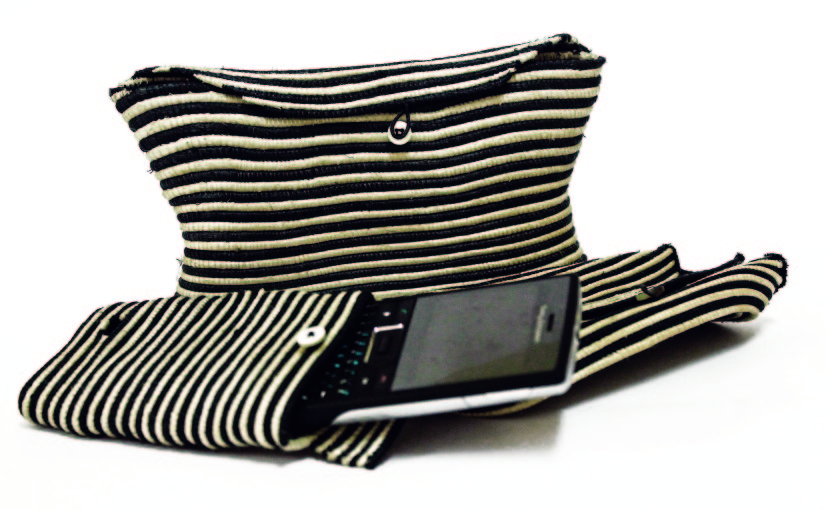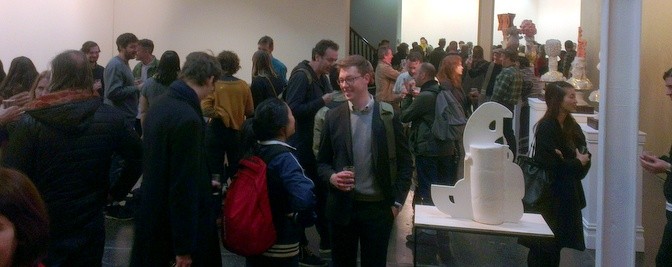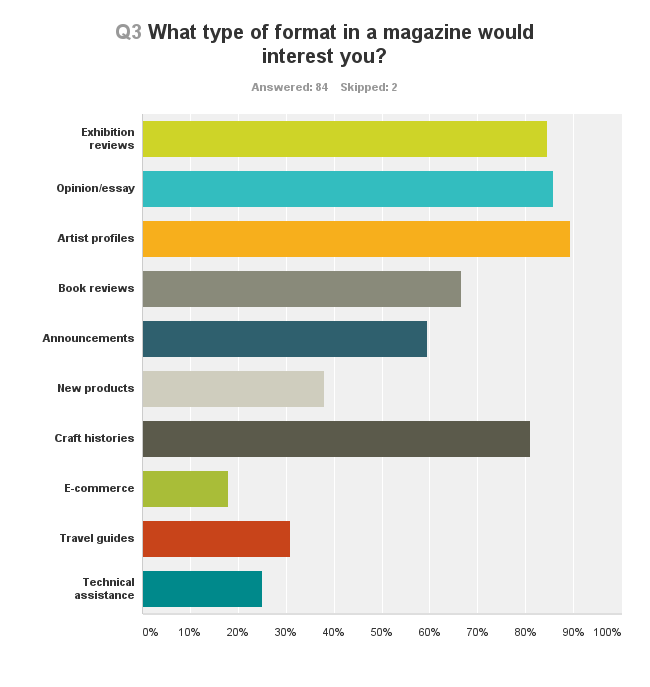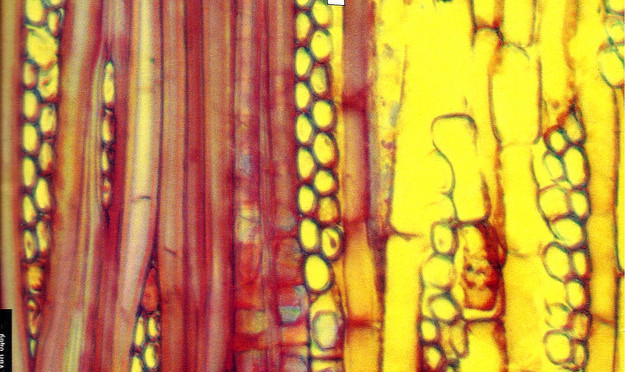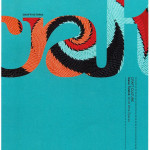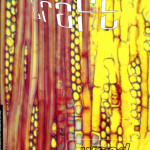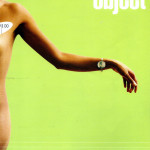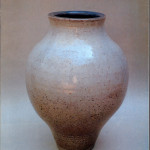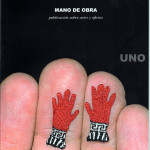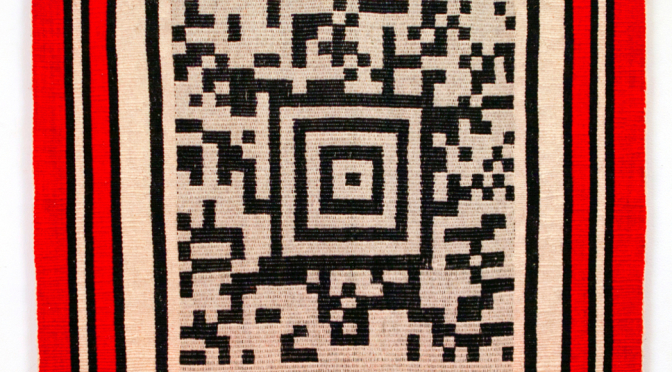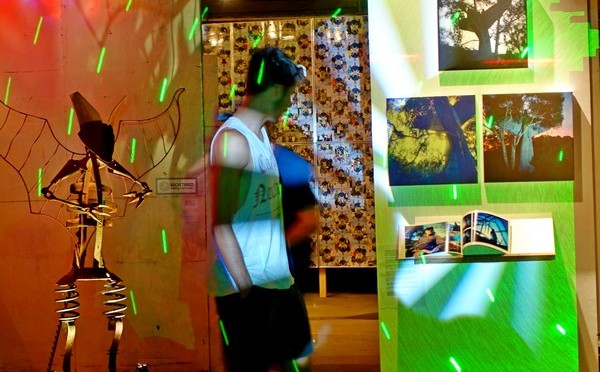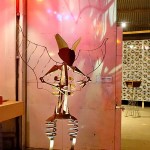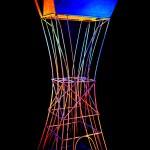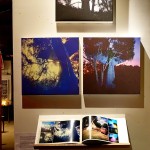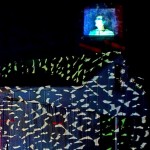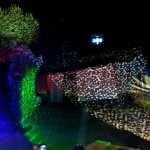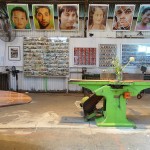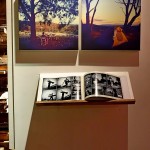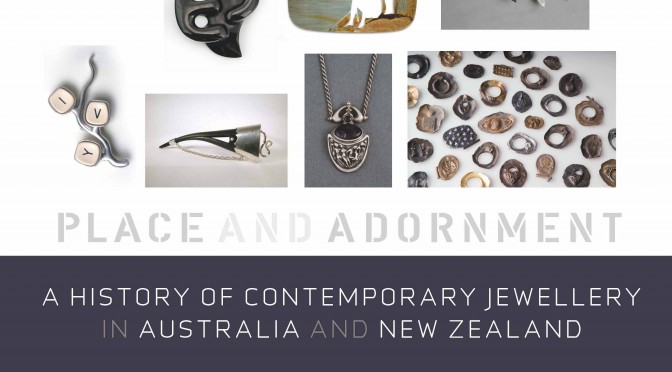All posts by Kevin Murray
Survey shows a need for critical writing about craft
The results of our survey are out. About two-thirds of respondents were craft practitioners. The others included curators/writers (44%) and designers (37%). Most currently get their information from existing craft & design organisations, though half also get their news from Facebook and blogs.
When asked about the kinds of formats that would be of interest, there was strong support for reflective writing, including reviews, essays and profiles. A surprising number opted for craft histories, which suggests a need to provide some reference point for the field.
- artist profiles when written independently and not gallery/artist generated publicity.
- investigative, analytical, witty editorial inquiry and one that pays writers
- Finding a way to network young curators with artists is also something missing from the Craft Industry
- Interviews with national / international craft and design curators Articles on grass roots initiates that promote and sell work
- It would be good to see some true, critical journalism, critiquing
- I think it should cover the intersections of the changing world of craft- ie traditional crafts and their reinvention using new materials/ new purposes
One craftsperson commented on a divide between the university and practice. While many enjoy the stimulation of education, they miss this when they leave.
I often feel I don’t know what craft workshops/depts are up to (visiting artists/shows/current theoretical thinkings in their galleries etc) and I’d like to know as I miss the academic world and its goings ons as a maker. As a maker I think there is too bigger disjunct once you are out in the real world between the two…
Many pleaded for critical writing, perceiving that many publications about craft are simply promotional.
Overall, the comments reflected the absence of publication – “Once again we are without quality Craft/Design publication so the need to restore the balance is important.” And a sense that something should be done new – “I think that it is timely and important for craft in Australia to have a lively, current, well written, pictorially rich magazine.”
As to the title, respondents were evenly split between the alternatives. But comments were useful in ensuring that the final title can realise the hopes that might be invested in it.
Thanks so much to all those who completed the survey. Your offers of support will be very important in getting this publication started.
Depending on seed funding, we hope to have the publication launched at the Parallels conference, National Gallery of Victoria in September. Please stay tuned for developments as they occur this year. If you have any inquiries, please contact me through this blog.
A new craft magazine?
- the strengthening network for craft and design across the Asia Pacific
- growing expectations of participation through social media
- increased interest in Aboriginal and Torres Street Islander craft & design in the region
- support for thoughtful and engaging writing about craft and design
- increased use of e-commerce
At this early developmental stage, it is important to receive thoughts on such a venture from those who are active in the sector (including outside Australia). Your responses to this short questionnaire are most welcome. Survey closes 6 February. Click here.
Mapuche stories woven into QR codes
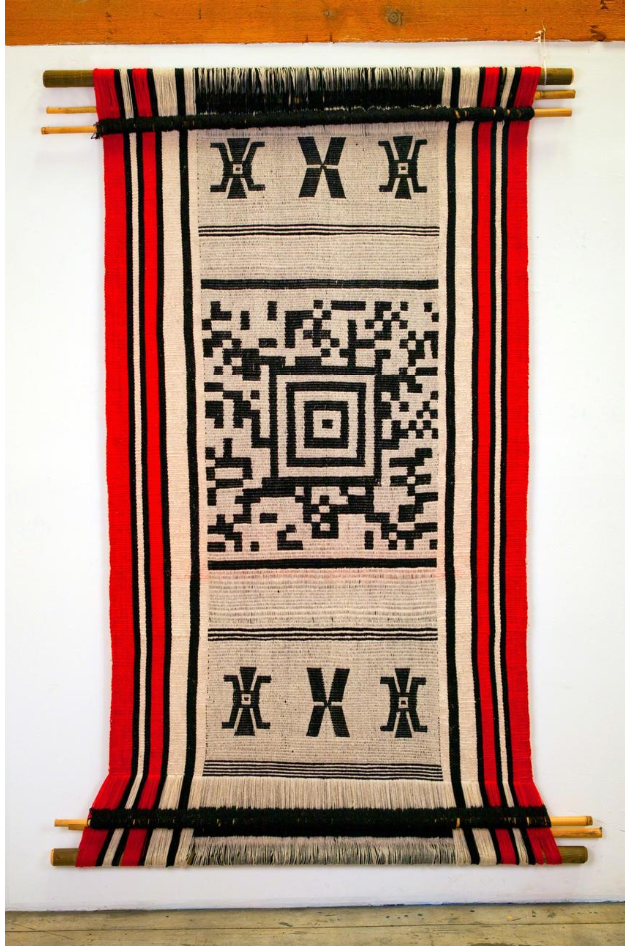
New Territories at the New York Museum of Art & Design is an ambitious survey of contemporary craft and design from Latin America. While many of the participants reward close attention, the work of Guillermo Bert is particularly intriguing.
Bert is a Chilean artist who migrated to the USA during the Pinochet era. In his new home, he developed a career making politically-charged art, drawing on the use of barcodes as signifiers of restricted information.
New Territories includes his work with Mapuche weavers from his country of origin. One of these, the 2012 work Redemption, is produced collaboratively with the weaver Anita Paillamil. Rather than traditional symbols, it features a QR-Code that links to a Mapuche myth. The work therefore is a testament to Mapuche culture both in the woven object itself and also the story that it encodes. What in his previous work was an emblem of repressive secrecy now becomes an important transmitter of cultural values.
These are the words that appear when the tapestry is scanned:
Somos prueba de que aun existe en el siglo XXI un pueblo ancestral.
We are the proof that in the 21st century, an ancestral nation still exists.
https://www.youtube.com/watch?v=IPjrzNKeHEY
The video depicts quite a fascinating collaboration. At first it seems a forced exercise. Bert seeks to have his design realised by a Mapuche weaver in Chile, but his agenda doesn’t seem connected with their own reality. Do they know what a QR code is? Will they ever get actually to see the work in the US gallery? Modern art is filled with examples of first world artists using artisans as extras for their conceptual adventures. But Bert seems to take it further.
As the story unfolds, Bert travels to the weavers and seems to develop an understanding with them. He even invites one of them to travel to his Los Angeles studio so they can be in closer contact. As the video shows, Anita Paillamil is quite excited to be given this opportunity. And other Mapuche figures (I recognise the journalist Elias Paillan) seem keen to use this work to share their stories. It has the makings of a real collaboration.
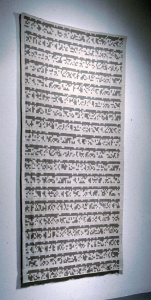
Bert continues a line of experimentation in weaving with digital code. In 1998, US artist Gwendolyn Zierdt started a remarkable series of works that played on the inscrutability of digital role. She translated the Unabomber Manifesto, which was about the decline of handskills, into a binary code that was then woven as a tapestry. It was a defiant proclamation about the co-existence of craft and technology.
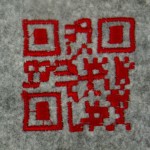
Embroidered QR code from Kuusk, Kristi, Stephan Wensveen, and Oscar Tomico. 2014. “Crafting Qualities in Designing QR-Coded Embroidery and Bedtime Stories”
goods, such as fairy tales on pillows and local wisdoms on grocery bags. The work is not only about the application of new technology to weaving, but also the relational possibilities it makes possible as stories of shared significance can be embedded in the object.
Of course, too much talk about money can detract from the personal relationship between an artist and artisan. While other artists like Alighiero Boetti do not acknowledge their artisans, Bert is quite overt about the role of Anita Paillamil. This is a welcome gesture that adds greatly to the meaning of his work.
But it seems important that our interest doesn’t stop there. Might Anita Paillamil take this further in her own work? Could she exhibit a similar weaving of her own in Santiago? It would be interesting to see if Bert’s work could inspire new work and make new pathways for Mapuche weavers in his home country. Perhaps they could have a more overt involvement in the messages carried by the QR Code.
Bert has cast the shuttle wide in his Coded Stories. But there are many more passes to come before the potential of these digital tapestries is fully realised. QR-code have capacity to unlock the secret life of objects. Scan this space.
Victorian makers follow a pattern
Humphrey Poland is a legendary Melbourne builder and designer. His approach to building draws heavily on a craft sensibility to materials, particularly in the use of recycled timbers that have their own story to tell.
Poland was previously a founding partner in the Flying Trapeze Café theatre restaurant in the early 70’s and later worked with the Comedy Café. His current interests include photography and bee-keeping. Today his main workshop is in Moyhu, a small town in the King Valley near Wangaratta.
To coincide with the Great Victorian Bike Ride, Poland curated an exhibition titled Multiples which brought to Mohyu an established and upcoming generation of artists. Much of the work related to wooden patterns that were found in the nearby Valve Foundry.
Here are some words I put together for the opening:
I feel a bit of a fraud speaking to you to this evening. Growing up in the new suburbs of Perth, I had little experience of the industrial world, the remnants of which we see here. I took my world of dreams to Melbourne more than forty years ago, when I saw them realised in the fabled light show of Hugh McSpedden to the music of Spectrum. These dreams came to earth finally at the Meat Market Craft centre, where as writer in residence I felt a craft camaraderie, tapping out sentences alongside jewellers hammering out metal surfaces or woodworkers carving out flourishes.
Yesterday I found a word to describe writing about what you don’t do: ultracrepidarianism. It comes from the tale of Pliny, where a cobbler has the temerity to cast judgement on a painting by the artist Apelles. In anger, the artist declaims, ‘Sutor ne ultra crepidan – Cobbler stick to your last!’
Allow me to stick to this last for a minute. While we tend to think of craft skill as something that is internalised in our bodies, there are some trades where the tricks are embodied in unique templates, like the last for many a shoe. There are stories of cobblers who destroyed their lasts in a bonfire rather than leave them to strangers.
In the post-industrial age of robots and 3d printers, we find ourselves surrounded by the leftovers of the mechanical age. Some believe that these are precious keys to design that need to be preserved. The company Lasting Impressions in Davenport collected abandoned matrices from printing presses as a kind of typographic DNA that one day may need to be resuscitated, Jurassic style.
Others find a new use for these remnants as art, like the sculptor Nicholas Jones who carves abandoned books into unique forms with a surgeon’s scalpel.
What seems special about this exhibition Multiples, is that not only have some artists recovered old wooden patterns used in foundries, but they have taken the logic of production in the creating of work. There are John Comeadows’ fantastic sculptures making the most of the primary colours of the original patterns. Humphrey Poland’s cards use the classic outline of the Christmas tree to produce an unending series of scenes. And Hugh McSpedden’s lightshow casts these shapes into forms that cover the world. Colin Musto has re-framed his technical drawings as works of art. Bill Walker documents the following results in our world that have been shaped by the same pattern.
And it’s heartening to see them also shaping the next generation to follow too. Stuart Sinclair, Joshua Lewis, Malcolm Laurence.
This is a generation that have dedicated themselves to making our world a more livable place. They have left their stamp.
Let’s hope that when god produced them, she didn’t break the mould.
Primitivism without the primitive
-

Anna Davern, Absent, 2007, reworked tin placemat and biscuit tin, 250 x 200 x 5 mm, Private Collection, Photo: Terence Bogue - The book by Damian Skinner and I, Place and Adornment, was recently reviewed by Grace Cochrane for Art Jewelry Forum. Cochrane is an authoritative craft historian, and her The Crafts Movement in Australia: A History (New South Wales University Press, 1992) is a bible for researchers like myself.
While mostly positive, the review did criticise our use of the word ‘primitivism’. Here’s the relevant section from our book:
Primitivism is one of the main ways that contemporary jewellers in both Australia and Aotearoa New Zealand worked out their relationship to place, in part by making explicit references to indigenous adornment practices. This, as we will show, was less common in Australia than Aotearoa New Zealand, partly because of differences in colonial history, but it was also discarded in Australia because of the ways in which the Australian contemporary jewellers chose to position themselves in terms of place – not by embracing it, and playing up primitivism as happened in Aotearoa New Zealand, but by arguing against the relevance of place to the creative process. Interestingly, some Australasian contemporary jewellery at the beginning of the twenty-first century seems to return to primitivism, but conditionally, as if seeking to create a primitivism without reference to the ‘primitive’.
Primitivism is not the exclusive focus of our history, but it is one of the key threads we found to connect together practices in Australia and New Zealand.
Cochrane offers a concise and lucid review of primitivism in early 20th century Australasia, particularly its implication in the appropriation of indigenous cultures . This criticism helps identify a key issue in our book that warrants further elaboration.
Cochrane states:
the term “primitivism” has not been used to describe contemporary crafts (and I checked with colleagues), not because of our ignorance of the issue, but because many of the so-called “primitivist” influences are in fact continuing characteristics of cultural groups living firmly in the present, and whom we respect.
True, few jewellers used the actual term ‘primitivism’, but nonetheless their statements and creative energy reflect a desire to draw from non-Western cultures. For instance, we quote Ray Norman who critiques the intellectualist bias in Western society: “‘Our society is hung up on words, isn’t it? And all the words keep going on while other “languages” are virtually ignored.’ By contrast, the ‘aboriginal man’ still knows how to feel things intuitively.” (p.90)
The underlying assumption that can be identified as ‘primitivist’ is that the development of Western civilisation entailed an alienation from nature. This has a long legacy in Western thought, stretching at least as far back as Montaigne. His essay on Cannibals in 1577 creates this distinction between natural indigenous and corrupt European:
They are savages in the same way that we say fruits are wild, which nature produces of herself and by her ordinary course; whereas, in truth, we ought rather to call those wild whose natures we have changed by our artifice and diverted from the common order. In the former, the genuine, most useful, and natural virtues and properties are vigorous and active, which we have degenerated in the latter, and we have only adapted them to the pleasure of our corrupted palate.
This concept of the ‘noble savage’ underpinned an Enlightenment quest to think beyond existing traditions and hierarchies. While this seems bold and revolutionary in the North, where the ‘primitive’ culture exists in an exotic and distant location, it is a different story in the South, where those assigned this role actually live.
The situation in countries like the Australia and New Zealand is different. Here post-colonial critique involves a speaking part for these symbols of a more wholesome otherness. Now we hear the other side of the story as indigenous voices speak beyond these Western preconceptions. This argument bites particularly in Australia, with the Marcia Langton debate about the right of Aboriginal peoples to seek mining rights and aspire to the very middle class lifestyles that urban romantics see as inauthentic.
So where is the link today with the primitivism of our naive settler forbears?
-
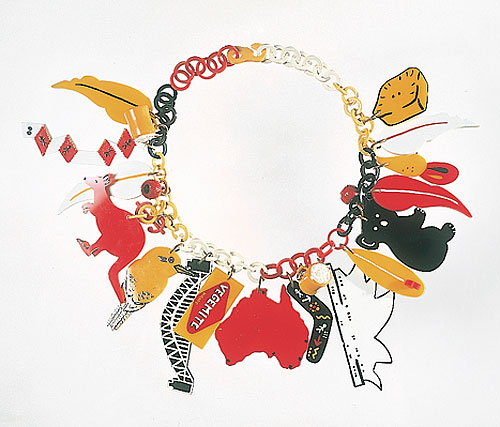
Peter Tully Australian fetish 1977, coloured acrylic, coloured oil paint, wood (gumnuts), metal length 37.0 h cm, Crafts Board of the Australia Council Collection 1980, Courtesy of copyright owner, Merlene Gibson (sister) - In writing this book, we were wary of the lure of ‘contemporary’ as a state where past prejudices have been magically transcended. In tracing contemporary practices back to the settler experience we wanted to revalue the primitivist strategy to consider its positive creative potential. The idea of a ‘primitivism without the primitive’ involves taking on its radical energies without using indigenous cultures as an alibi to mask one’s own experience. Whitefellas should be able to seek a space beyond their inherited European perspectives that doesn’t involve ‘black face’ or other appropriations of indigenous culture. We see a version of that in Peter Tully’s ‘Australian Fetish’, which draws on a colonial concept yet identifies it with Australian popular cultures. His Urban Tribalism uses the space opened up by primitivism to represent city lifestyles, particularly in Gay and Lesbian communities.
The story we seek to tell is the transformation of primitivism from its origins in the patronising colonial mindset to the drive for jewellery to come from its place on the ‘other’ side of the world. This primitivism aligns with the critical force of modernism in contemporary jewellery, particularly in the critique of preciousness. According to this perspective, the meaning of jewellery has been corrupted by the capitalist system that reduces all value to the economic. One alternative lies in a return to the symbolic uses of adornment that preceded modernity. This is one of the unique perspectives that Australasian jewellery contributes to this global movement.
-

Alice Whish, Touch pins, 2006, 925 silver red and yellow ochre and natural resin, 22mm across and 8mm deep Photo by Orlando Luminere - The issue, then, seems one of terminology. We seek a broader definition of primitivism than that usually ascribed to exotic fascination, such as the inspiration that Picasso drew from masks of the Ivory Coast. In the case of contemporary jewellery, this reflects an interest in the pre-capitalist use of adornment, where it signified social identity rather than personal wealth. This is one of the most powerful references in the critique of preciousness. In this, the Pacific cultures provide important models for non-Indigenous Australasian jewellers. The challenge is to now go beyond appropriation behind the scenes and to engage in direct dialogue, as Alice Whish has done in her collaborations with Rose Mamuniny from Elcho Island.
We also wanted primitivism to include non-indigenous cultures, such as the life of the street that contemporary jewellers have turned to in this century. This turn often presupposes that the energies of the street are more spontaneous and less contrived than the isolated context of the art gallery. Fashion, popular trends, tribal identities and personal narratives can be seen to give ‘life’ to jewellery, in a way parallel to the social function of adornment in traditional communities. This is a concept of primitivism that is embraced by even a resolutely modernist jeweller as Susan Cohn.
Would ‘post-primitive’ better reflect its ironic use in Australia? Maybe. But for every playful Peter Tully, there’s also a serious Ray Norman or Alice Whish. And recently, contemporary Indigenous jewellers like Areta Wilkinson and Maree Clarke seek to recover lost elements of their culture through ornament.
So maybe primitivism can be redeemed as a positive creative energy, once we stop speaking on behalf of others. As the Spanish architect Gaudi said, ‘originality consists in returning to the origin.’
Thanks for starting the argument Grace. To be continued…
New Things: Koskela lights made in Elcho Island
This is a story of new things.
Three and a half years ago Sasha Titchkosky was browsing the Internet when she came across a site displaying weavings from Elcho Island. She recalls being struck by their beauty. Sasha contacted ANKAA in Darwin for more information. A helpful person then put her in contact with the new arts centre manager at Elcho Island. From him she learnt about the Selling Yarns conference in Darwin, where she was able to discover more about indigenous craft in the top end.
Ten years ago Sasha and her husband Russel left their corporate jobs to start a design company called Koskela, specialising in Australian-made furniture and fittings. Sasha felt there was potential to present work made from Elcho Island to Koskela clients, but she had to think of a suitable product. Most homeware products were unsuitable, because there was direct competition from mass manufacturers. With this question in mind, she returned to the second Selling Yarns in Canberra, where a light bulb clicked, literally. Sasha thought that her clients might be willing to spend a little more on a beautiful light as a piece of sculpture than something purely utilitarian.
Sasha’s challenge was to develop a means of production that was sympathetic to the lifestyle on Elcho Island. It would be difficult to expect production on an industrial scale. So a frame design was developed around which fibre could be woven, allowing the application of traditional basket-making techniques. She took this idea to the Darwin Art Fair where she met art centre manager Dion Teasdale and Mavis Ganambarr, leading artist from Elcho. Mavis thought it was a good idea. Last year Sasha visited Elcho Island to confirm the arrangement and conversations continued when Mavis and Dion came down to Sydney.
Product development was a two-way process. As the lights began to be produced, some modification was required. Mavis didn’t like working with white-coloured frames as the colour showed through the weaving. So they stuck to black.
The arrangement is quite novel for Koskela. They normally work closely with manufacturers in developing products. The process maintains an industrial discipline in order to maximise consistency of output. In this manner, they had previously developed a series of lights with Mud Ceramics, which were quite tangible yet standardised in appearance.
The method developed by Koskela is rather designed to maximise variation. This is not solely to provide a more diverse product for the consumer, but also to be able to sustain the interest of the artists. Here the approach is more like an artistic commission, which depends on the enjoyment of the producer. The women weavers are more than technicians—a set of skilled hands. They also have a sensibility that is expressed freely.
Ten women were involved in their production. They were evenly divided between those living on the island community of Galiwin’ku and those who belong to Arnhem Weavers, a collective living in the Mapuru Homeland. There were some problems at first in adapting basket-making to the new task, but Mavis organised the women into groups so she could work through the process with them. After this, they seemed quite happy to go back to working on their own.
Earlier this year, Koskela exhibited their work as Yuta Badaya at Object Galleries in Sydney. The title means ‘In a new light’, with reference to the opportunity of showing traditional weaving techniques in a fresh context. According to the artist statement by Mavis, ‘I thought it would be interesting to take our traditional Yolngu materials and use them on Balanda objects. We all thought this would be a good way to show a new audience what can be done by Yolngu artists with materials from the bush.’
There are two quite striking features about the lights. First, despite common methods, the results
are quite diverse. The women all employed similar traditional techniques: fibre gathering, use of natural dyes and string making. But the weaving styles were quite different and sometimes alternative materials were incorporated. Margaret Gudumurrkuwuy, for instance, includes shells and feathers in her lights. The range demonstrates a strong degree of artistic expression in the process.
Second, these pieces express a compelling tension between modernist design and handmade textures. We are used to traditional baskets that have a relatively loose organic form, which suits well their use as objects carried near the body. Seeing them stretched on a three-dimensional metal frame brings into contrast their handmade quality. It’s an interesting step towards a range of Indigenous products designed for urban use. And it’s a refreshing contrast to the dominant method today, where Aboriginal designs are licensed to manufacturers, detaching the form from the process of production.
The fourteen initial lights sell from between $890 and $2,000. The artists are paid an up-front fee, negotiated through the Art Centre, who is also paid a commission. Sasha sees it as important to support the Art Centre. The first buyers were individual clients who responded to an article in Vogue Magazine. They are now getting inquiries from interior designers, including a restaurant.
Koskela also sell Tjanpi baskets from the Western Desert. They have been keen to have some lights made by Tjanpi weavers and are now finding some women interested in this.
This is interesting not just for the beautiful objects that are produced, but also for the cultural politics. There are some who might be concerned at the intervention into traditional weaving. What results are not the baskets and bags associated with life around Elcho Island, but products specifically designed for city living. Electric lights on the island consist of bare fluorescent tubes. So we might be concerned about the experience of alienation in this process, as products are being made for an application that is quite foreign to the lives of those who produce it. While this might be taken for granted in an industrial context, we tend to subscribe to a sense of authenticity in what emerges from remote Aboriginal communities. We like to see images of works like grass sculptures in situ, at home with the community. These lights don’t seem to fit into life at Elcho.
This thinking can take us in circles. We want a product that the artists want to make, but they are making something that they think we like to have. Sometimes, the only way to get out these kinds of circles is to talk to someone directly.
Indeed, when I asked one of the weavers who came to Sydney for the opening how she enjoyed the weaving process, she did say that she found it awkward at first to be working with metal. She was used to making baskets free-form. It’s difficult to know how to take comments like this. It could well just be a teething process—indeed, she seemed to enjoy the attention the results were receiving.
Later, I asked Mavis how the women initially reacted to the task of weaving around wire frames. She said they were quite interested because it was yuta djama, ‘a new thing’. While this phrase is very familiar to us, it does seem important in this context. As would be expected, some are uncomfortable at first with new ways of doing things. But this seems outweighed in the end by a desire from the women to expand beyond a fixed traditional repertoire.
Taking a step back, this issue does raise the problem of how contingent the value of these works is on the perceived attitude of the producers. Would it matter to us if the person who assembled our iPhone resented the drudgery of the assembly line? I doubt anyone gives this a thought. But it is different in a cultural context. Scandals about carpetbaggers holding desert painters hostage to produce art works make us sensitive to this issue.
There is a sense that in purchasing one of these lights, we are acquiring some of the good will from the community. There’s an important social dimension to this, which shouldn’t be overlooked. This importance of this good will goes beyond our own personal satisfaction. Things carry stories. The lights naturally lend themselves to conversation. If a client enters the meeting room which is lit by one of these lights, there are likely to be curious about where it comes from. The resulting story will reinforce positive values in the company—allegiance to Australian culture, ethical vision, etc. With
companies eager to subscribe to values like Corporate Social Responsibility, there is a growing market for objects that reinforce this message.
But given the sophistication of marketing, such designs always need to be one step ahead of the manufacturers. We see this obviously in the tourist industry with boomerangs made in China. Once these flood the market, we become more wary of the value of the boomerang as a cultural artefact. One day, a company in China might indeed employ local artisans to produce almost identical looking lights to those designed by Koskela. While difficult to distinguish, they would lack the essential ingredient—the story.
Koskela have raised the bar. Critically, they have proven that there are alternatives to industrial manufacture in design. But we need to develop systems that ensure the value we give to them as cultural artefacts is true to the experience of those who produced them. We need to keep the story alive.
I asked Mavis what she’d like the Balanda to think about when they look at their lampshades. She said that she hopes that they can appreciate this ‘yuta djama and see that we in Elcho Island can made different things.’
It’s curious to put innovation into an indigenous context. We tend to think of Indigenous culture itself as a fixed entity: change emerges through contact with Western modernism. But we need to remember that today’s tradition is yesterday’s innovation. As the Jewish proverb advises, ‘Make your days new as of old’. Australian craft and design has a new thing. The story continues…
Originally published by Craft Australia in 2010
Unmaking Waste 2015 – call for abstracts
Unmaking Waste 2015 is a conference in Adelaide that seeks to engage dialogue and share ideas, perspectives and possibilities for shaping a physically and socially sustainable planet. The main conference will take place over two and a half days and involve speakers from a broad range of academic and industrial disciplines who work across research and practice-led investigations into the physical and symbolic nature of material flows. For students interested in exploring more about social and cultural sustainability in design practice, we are presenting a set of pre-conference workshops plus a master-class on the day preceding the conference.
Abstracts for the conference are due 17 October 2014.
Place and Adornment – the jewel in the antipodes crown
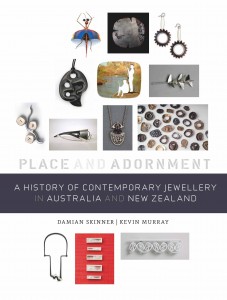 Six years ago Damian Skinner approached me with the idea of a joint book about the history of contemporary jewellery in Australia and New Zealand. Damian has an impressive track record in getting books to print, and I’d always thought that the epic story of contemporary jewellery in our part of the world had yet to be fully told.
Six years ago Damian Skinner approached me with the idea of a joint book about the history of contemporary jewellery in Australia and New Zealand. Damian has an impressive track record in getting books to print, and I’d always thought that the epic story of contemporary jewellery in our part of the world had yet to be fully told.
The trans-Tasman conversation can be testy, but inevitably fruitful. We worked through the obvious difference in the respect that the two countries treated the body ornament of their first peoples. The history of European colonisation in New Zealand involved an appropriation of Māori ornament, while in Australia until recently Aboriginal jewellery was dismissed as childish. Despite this gap, there was a shared experiment with primitivism on both sides of the Tasman which helped lay the ground for a jewellery that was distinct of its place.
Both countries also shared the fortuitous arrival of northern Europeans from the 1960s, who brought with them the calling of modernism. This inspired some key early figures to develop ambitious international platforms, like Cross Currents and Bone, Stone and Shell. The top-down support from bodies like the Australia Council had clear positive results (an important reminder now in this period of neglect for crafts).
Beyond the major events, there were a myriad of smaller experiments, whose relevance might emerge only decades later. It was difficult work distilling so much information into condensed profiles, balancing word count against image size.
The story of contemporary jewellery in Australasia demonstrates that it is possible to develop an art form far from the transatlantic centres. While work from here certainly features strongly in Munich, it also has its own distinct frame of reference. Contemporary jewellery should certainly sit alongside painting, film and literature as an art form that reflects meaningfully on what it means to live on this side of the world. This is especially the case in Australia, which is so dependent on extraction of precious metals for its wealth.
But the story is certainly not over. Not only are there are many innovative new jewellery practices emerging now, there are also scenes being developed in other countries far from the historic centres, such as India, Taiwan, Mexico, Chile, Argentina and Indonesia. Contemporary jewellery today is a rich global conversation.
And this is only one of the stories to be told about craft in Australia. There are many other remarkable threads where skilled and imaginative artists have learned the language of the land to create something meaningful and original. I think particularly of media like ceramics and fibre (wood generally).
Though relatively young as an art form, craft in Australia already has a legacy that could inspire future generations. We just have to believe that the value of living on this side of the world is what we make of it.
Place and Adornment: A History of Australasian Contemporary Jewellery is distributed by Bateman (NZ), Powerhouse Museum (Aus) and Hawaii Press
Results of Craft/Object and Visual Arts reviews now out
Creative NZ increases support for craft/object makers. When will Australia catch up? Results of Craft/Object and Visual Arts reviews now out.
